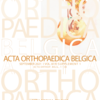Reperfusion interval effect in prevention of ischemic-reperfusion injury due to tourniquet use on fracture healing
fracture healing ; ichemic-reperfusion injury ; malondialdehyde ; reperfusion interval
Published online: Oct 08 2021
Abstract
Tourniquet is widely used in orthopedic surgery but its application may induce ischemic-reperfusion injury. It may lead to the disruption of fracture healing by altering the balance between osteoblast and osteoclast. One way to reduce the negative effects is by reducing the ischemic period. The aim of this study is to evaluate the effect of reperfusion interval on ischemic-reperfusion injury and fracture healing. This study involved 24 Wistar strain male rats, divided into four groups. Their tibias were fractured, and tourniquet was applied on their proximal thighs for three hours. Group one is the control group (C) with no reperfusion interval, group two,three and four were given the reperfusion interval of 5 (R1), 10 (R2), and 15 (R3) minutes after 2 hours tourniquet use. On the 14 th day, the tibia was harvested to measure the level of malondialdehyde (MDA), diameter of the callus, and osteoblast cell count. The statistical comparison was conducted using One-way ANOVA, followed by Tukey test.
There was a significant difference of the MDA level, callus diameter, and osteoblast cell count between control group and all reperfusion groups. However, there were no significant differences in regards of the MDA level and callus diameter in all pair- wise comparisons between all reperfusion groups. In regards of osteoblast cell count, the highest was observed in group R2. The MDA level was inversely correlated with both the callus diameter and the osteoblast count.
Reperfusion interval can reduce ischemic reperfusion injury in rat’s fracture healing process.
